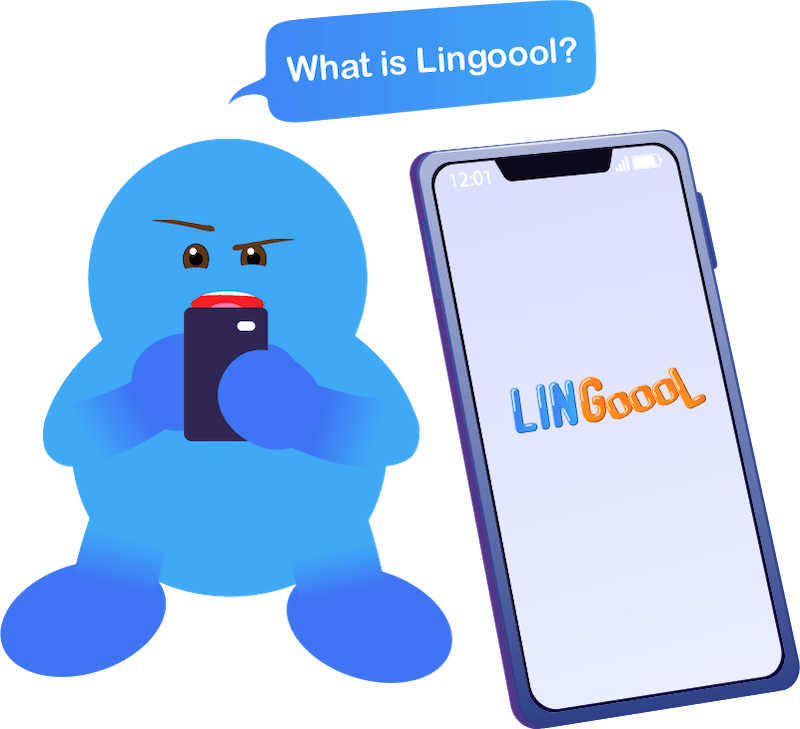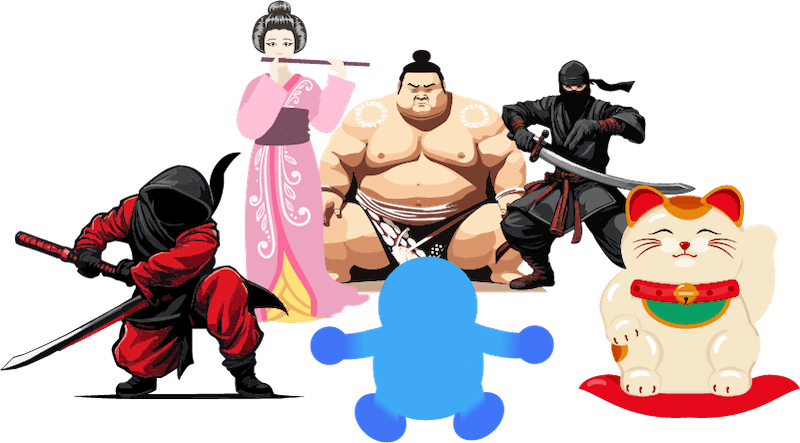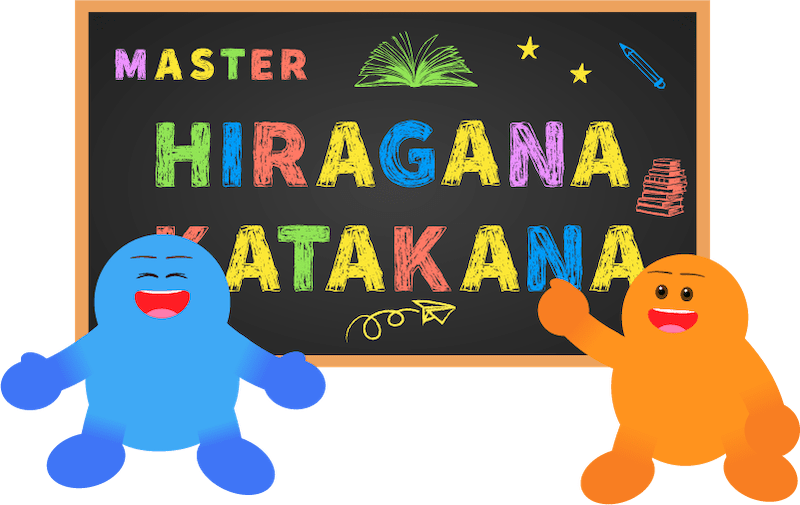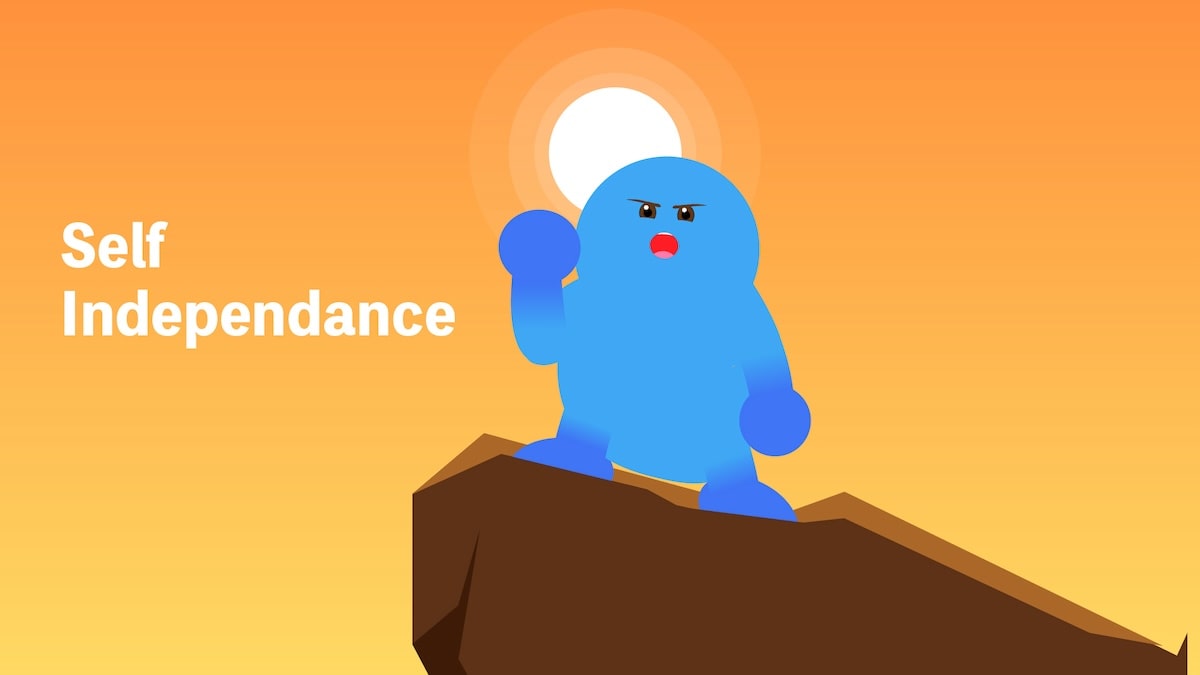
I made this roadmap for people who really want to learn Japanese. It's based on how I learned many languages and how I've helped others with Japanese.
I'm a native Japanese speaker, so I can't really give you the whole "learning Japanese from scratch" story. But I've learned English, French, Portuguese, and more.
While I might not speak them perfectly, I've often heard people say they'd love to speak Japanese the way I speak in these other languages. And that's where I can step in.
I've been on this language-learning journey for quite a while and understand the ins and outs needed to reach a certain proficiency.
With that knowledge, I've reshaped this roadmap specifically for those stepping into the world of Japanese, modifying it from how I typically approach other languages.
So I kept what worked and got rid of what didn't. This course is the result — It's the stuff that worked. It's all the good bits I wish I had when I was starting out with a new language.
In a nutshell, with this roadmap, I aim set you up with the right mindset, give you a sense of what's coming, and help you lay out your goals.
By the way, just to make sure this roadmap is as thorough as possible, I'll start by diving into how people usually get hooked on the Japanese language.
Everyone's got their unique journey to Japanese, and while this might seem like a bit of an extra but I did it for the sake of completeness.
Next, I will define fluency and then I'll break down the roadmap step-by-step. I'll lay out each stage you'll go through on the path to Japanese fluency and highlight what my course brings to the table at every turn.
And to wrap it all up, I'll answer some questions that pop up a lot when people are learning Japanese.
Alright, are you ready?



1. Initial Encounter
You stumble upon the Japanese language while exploring anime or watching videos on Social Media, but you don't really pay much attention to the language yet.

2. Growing Curiosity
As you become more interested in Japanese content, you start picking up some words or phrases. Your curiosity about the language increases.

3. Awakening
You realize that you want to understand the content in Japanese and seriously start thinking about learning the language.

4. Exploration
You begin searching online for resources on how to study Japanese. You watch Japanese learning videos and learn basic phrases.

5. Seeking Structure
You have been studying Japanese using random online content, but you realized the need for a structured approach. So you began searching for apps, phrase books, grammar books, and other resources. Probably you came across Lingoool during your search and decided to give it a try.
- - - - - -
We all have unique stories of how we got here, so my examples might not line up with yours.
But what's clear is our shared goal: Dive deep into Japanese and truly get it.
Become Fluent!
But...what is fluency?

Many people set goals with specific deadlines, like aiming to become fluent in two years.
But the problem is that everyone has a different idea of what fluency means.

Some people consider fluency as being able to have smooth conversations with native speakers, while others think it means speaking like a native speaker.
So, before we move forward, let's establish our own definition of fluency and the different stages leading up to it.
Super Beginner

You’ve just started your Japanese journey, so you’re an absolute beginner. You might know a few common phrases in Japanese, but you can’t read Hiragana and Katakana yet. Your goal in this phase is to learn the Japanese writing systems and get familiarized with the language.
Beginner

You’ve learned Hiragana and Katakana. Now, the real fun of learning Japanese begins. You’ll start picking up basic phrases like greetings, introductions, and common expressions that we use often. And you will also be able to recognize them when you hear them.
Upper Beginner

You’re getting into Japanese grammar now. You’re beginning to understand the basics, like sentence structure, grammatical rules, and the concept of particles. You’re also starting to learn conjugations. Speaking is still challenging, but when you read, Japanese sentences begin to make sense to you.
Intermediate

You’re getting the hang of Japanese structures and conjugations. Constructing simple sentences in different tenses is becoming easier. You still have a hard time having conversations, but you can read simple texts and also understand simple conversations if spoken slowly and clearly.
Upper Intermediate

You’ve mastered key grammar rules and can construct sentences. While you may still fumble for words or misuse particles, you can hold conversations with native speakers. You can switch between formal and informal Japanese depending on who you are talking to. At this level, you can confidently say that you speak Japanese.
Advanced

Japanese became a part of your life, and you find yourself thinking, talking to yourself, and even dreaming in Japanese. You can understand many topics, especially those you are familiar with or interested in. From this stage on, rather than focusing on grammar, it’s more beneficial to immerse yourself in activities like reading books, watching movies, and speaking with native speakers.
Upper Advanced

You can hold conversations effortlessly, and everyday communication is a piece of cake. You can even enjoy watching your favorite Japanese shows and understand them without subtitles. While complex subjects might still be challenging to express yourself in, you are capable of finding ways to get your ideas across with the vocabulary you have.
Mastery

You’ve achieved a remarkable mastery of Japanese. People often wonder if you grew up in Japan or have spent a considerable time there. While natives might spot your accent, your fluency is striking. In some areas, your grasp might even surpass that of some native speakers.
These levels are based on my personal experiences and observations while helping people learn Japanese.
As I continue teaching and receiving feedback from my students, I may make modifications in the future. But, for now, these levels serve as a guide.

In my opinion, once you reach the advanced level, it's up to you to decide.
If you can comfortably hold conversations with native speakers, you can consider yourself fluent.
Personally, I consider the upper advanced level as my definition of fluency.
I call myself fluent if I can effortlessly communicate with native speakers, and words flow naturally without much thought.
Alright, now that I've shared my definition of fluency, let's move on and see what you need to do to become fluent and what I offer at Lingoool!

Let's dive into the steps needed to master Japanese and how my course is tailored to guide you there!
While I'm still developing many components of the course, this section will give you an idea of my vision and what I aim to create.
But as I continue to craft the content, there might be shifts in my initial plan or even new courses introduced.

Surround Yourself with Japanese
Kickstart your Japanese journey by surrounding yourself with the language.
Find content that you love – be it movies, music, or podcasts – and dive in.
Learning new words or phrases isn't the goal right now; what's crucial is tuning your ear to the rhythm and flow of Japanese.
While it's tempting to treat your favorite Japanese show as a study session, it's best to relax and enjoy it.
Feel the language rather than dissecting it.
Make Japanese a regular part of your entertainment.
Instead of watching movies or TV shows in your language, watch Japanese films or dramas, discover your favorite Japanese singers, or follow Japanese influencers on social media.
A common challenge many learners face is the speed at which native speakers speak. Most learners feel overwhelmed by the pace, primarily because they don't get enough exposure to Japanese spoken at its natural speed.
This is why it’s crucial to start listening to Japanese spoken at a natural speed from the beginning of your learning journey.

Sign up for language exchange apps
For those who enjoy chatting and want to connect with Japanese natives, language exchange apps like HelloTalk or Tandem are a great choice.
While you will most likely have conversations in English because you can’t speak Japanese yet, simply having native Japanese friends can really boost your language journey.
I’ve used these apps when learning a new language and have met tons of cool people.
Some of them even became really good friends and helped me tremendously with my language learning.
But finding the right language partner can be tricky, and many people come and go!
But don't sweat it.
Even if things don’t work out, it shouldn’t slow down your Japanese progress.
I always tell people that it’s great to have a good language partner but you don’t want to depend on others to learn Japanese from the beginning!
There are so many things you can do to improve your Japanese on your own until you get to a certain level like an intermediate or upper-intermediate!
So don’t get hung up on finding the right partner too much!
But, if you hit it off with someone, make an effort to keep that friendship going.

Familiarize Yourself with Simple Phrases
Alright, so this is where your active Japanese journey really begins and we start off by learning simple phrases!
Like, greetings and phrases that we often use, especially the ones that we say when we react to something.
For example, when you watch a funny video, you might say, “Oh, it’s funny,” or when you realize that you left your phone at home, you would say, “Oh shit…”
We’ll cover these kinds of phrases in our lessons!
We will also teach you useful phrases for traveling in Japan, so you can interact with locals during your visit.
And you know what? I will use the English alphabet so you can learn without knowing Hiragana and Katakana.
Every time I learn a new language and watch a movie in that language, I don’t understand a thing at first—it all sounds like gibberish.
But then I learn simple phrases, and when I watch the same movie again, I can recognize them. I really like that feeling, and I want you to experience that too!
By the way, this is going to be the first and the last lesson where I will teach you using the English alphabet.

Hiragana & Katakana
Mastering the Japanese alphabets - Hiragana and Katakana - is non-negotiable. They're pivotal to the language, and you can't move forward without them.
Think of it as trying to learn English without knowing the ABCs - Pretty tough, if not impossible, right?
This is your first real challenge in Japanese.
But don’t worry! I’ll guide you through everything, from reading and writing Hiragana and Katakana.
You will also learn crucial pronunciation rules that are key to understanding spoken Japanese.
Just like in other languages, we don’t always pronounce words in Japanese exactly as they're written.
So I will show you how to pronounce each sound and how we actually speak so you can start understanding spoken Japanese!
By the way, most learners I've seen, they got these alphabets down in about 5 weeks.
Once you’ve mastered Hiragana and Katakana, you are now at the Beginner’s level!

Kanji are Chinese characters used in Japanese, each one representing a symbol with one or more meanings.
Many people learning Japanese think they absolutely need to learn Kanji to speak the language.
And yes, Kanji is important for reading Japanese books and articles, but it shouldn’t be your top priority at the beginning, especially if Kanji isn’t your main interest or motivation for learning Japanese.
Instead, you should focus on building your vocabulary and familiarizing yourself with the sounds of each word.
This way, you can recognize words when you hear them, not just when you read them.
Once you’ve got a good grasp of basic Japanese, learning Kanji becomes much easier. So, start with the basics, get them solid, and then consider tackling Kanji.
In my course, whenever Kanji appears, I include “Furigana,” a pronunciation guide for Kanji. This is because my entire course emphasizes spoken Japanese used in everyday life.
So even if you can’t read Kanji, as long as you can read Hiragana and Katakana, nothing will stop your progress in learning Japanese in my course.

Self-Introduction
After learning Hiragana and Katakana, the first task is to learn how to Introduce yourself.
But Why?
Because you’ll use them all the time, no matter how advanced your language skills become.
They are the universal starting point for any interaction, right?
So I will teach you how to state your name, nationality, hobby, profession, and more. You’re also going to learn how to count and say dates.
Learning self-introduction is one of the first things that people do when they learn a new language and they think it’s easy but you are wrong!
If you want to fully understand the meaning of each phrase, you need to understand the underlying grammar, and to express certain things, you need to know a few complicated grammar rules.
But to make things easier, I’m going to simplify the phrases and we won’t dive deep into the grammar just yet, but I’ll make sure they still sound natural.
This way, you can use them confidently when you’re meeting someone new.

Focus on Solo Practice in Early Learning
By now, you've learned Hiragana, Katakana, basic phrases and self-introduction.
These are great when you have someone to chat with, but what if you’re learning Japanese on your own?
It's actually quite rare to always have someone to talk with, and if you do, you’re among the lucky few.
However, most of us don’t have this privilege.
This is why it’s crucial to start focusing on things you can practice by yourself at an early stage.

Eating something? Say "I eat…" in Japanese. Taking a shower? Say "I take a shower" in Japanese.
This practice won’t make you fluent overnight, but it’s a fun and effective way to build vocabulary, especially verbs.
Plus, it’s a big step towards making Japanese a regular part of your everyday routine.
The more you get used to expressing your actions in Japanese, the better you’ll become at talking about what you do, what you’re doing, what you will do, and what you did when you learn verb conjugations.
But it doesn’t have to stop at verbs.
Try to memorize words you often see, use, or touch in everyday life (nouns), and describe how they look or feel—like big, small, soft, or hard (adjectives).
Even without knowing the grammar, you can still improve your Japanese skills by focusing on expanding your vocabulary during this phase!
In my course, I’ll provide you with a basic vocabulary list that every Japanese learner should know, so you can start by memorizing these essential words!

Dive into Grammar
It's time to plunge deeper and tackle grammar.
Given the structural differences between Japanese and English, a direct translation of sentences often feels off.
Solely relying on memorized phrases will only get you so far.
This is why understanding Japanese grammar and its unique structure is key.
I know, diving into grammar might seem daunting, but trust me, there's no way around it.
Learning grammar is like putting pieces of a puzzle together. Once you get the hang of it, all those phrases you've been memorizing start fitting in, leading to those awesome "aha!" moments.
It’s a super exciting feeling when things start connecting, and it will take your language-learning journey to a whole new level.
And this is where my course truly start shining!
I've put together a course “Grammar Dive”!
It's one of the most crucial courses I offer. If you don't get a good handle on the things that I teach here, it could really affect your learning down the line.
That's why I recommend going through the whole course at least once. It's packed with important concepts you'll use all the time.
And I promise you that I will teach you in a way that is easy to understand and only focus on the important rules that you need to know to understand daily Japanese.
But I am telling you, it will be quite a long journey, and you will probably get frustrated sometimes.
Just learning grammar can get boring as well!
So, while learning grammar, you will also learn many other things!

Self-Talk
Ever wondered how Japanese people talk to themselves, either out loud or silently?
Wouldn't it be cool to switch your inner voice to Japanese?
Talking to myself has been a significant part of my learning process.
You spend a lot of time alone when learning a language, right?
Even if you have friends to practice with or you have a tutor, they have their own responsibilities and can't be there every time you want to practice your Japanese.
This is why self-talk is a great way to practice on your own.
Yes, talking to yourself might seem weird, but it's very effective and will not only help with self-conversation but also improve your speaking skills with others.
So, I will teach you how to talk to yourself in Japanese so you can practice alone anytime, anywhere.

Solo Talking
The title “Solo Talking” might sound confusing, but here's what it actually means: the course focuses on scenarios where only one person is speaking.
This could be someone sending a voice message, sharing a story directly with friends, or just talking about their day.
The key point is that we're focusing on listening to one person at a time, not a back-and-forth dialogue.
Throughout my language learning journey, I've realized that listening to one person is easier for me than trying to follow conversations between multiple people.
It helps me relate more, visualize the situation better, and imagine myself in those scenarios, actually speaking the language.
That's why I decided to create this course. It's filled with real-life examples, like someone telling a friend about an event, answering a question, or sharing something they've recently learned.

Dialogue
We're stepping into conversations that involve two or more people. It's a great way to use what you've learned and get a feel for real Japanese group talks.
We're mixing things up a bit by pulling our dialogues straight from everyday life and also throwing in some made-up stories that are kind of silly but, I hope, fun for you.
You'll learn how people react, share opinions, and engage in conversations.
Expect to run into plenty of slang that doesn't usually show up in textbooks, and be prepared for the pace to pick up when people get really into their discussions.
This combination of fast-paced conversation and slang might feel a bit overwhelming at first.
But the more you listen, the better you'll get at picking up on those nuances and finding your rhythm in these exchanges.
Once you finish all these courses that I offer, you will reach...

Self-Independent
[sɛlf ˌɪndɪˈpɛndənt] • noun
A learner who has gained a foundational grasp of a language, including key vocabulary and grammar rules.
This individual is capable of evaluating their own learning needs, setting achievable goals, and confidently pursuing further study without the constant need for external guidance or feeling lost.
At this stage, you’re ready to immerse yourself in real-world content and engage more deeply with native speakers.
You’ll find that you understand much more and no longer need a structured approach to learning.
This phase is about exposing yourself to the language as much as possible and getting creative with your study plan.
It’s similar to graduating from university and entering the real world.

There’s no set path, and you’ll need to discover your own methods to continue improving.
While you’re not fluent yet, you’ve gained confidence in your Japanese skills and can evaluate your progress.
You’ll know what areas to focus on and how to direct your studies.
Based on the levels I’ve defined, you’re now at an upper-intermediate level.
To reach fluency, you’ll need to consistently use Japanese in your daily life. Speaking with native speakers is the quickest route to fluency at this point.
It may take a year or more to become fluent after achieving self-independence, but persistence is key. As long as you keep at it, you’ll get there.
And there’s one more thing!
Throughout your Japanese language journey, you will probably hit a plateau where you feel like you’re studying but not making significant progress.
Having learned several languages myself, I know how frustrating this can be, but it’s a normal part of language learning.
When this happens, don’t give up!
Keep pushing through and stay committed. As long as you remain determined, you’ll be able to speak Japanese fluently—trust me on that!
There you have it, an overview of what I offer in my course, and now you know what you need to do to become self-independent!
